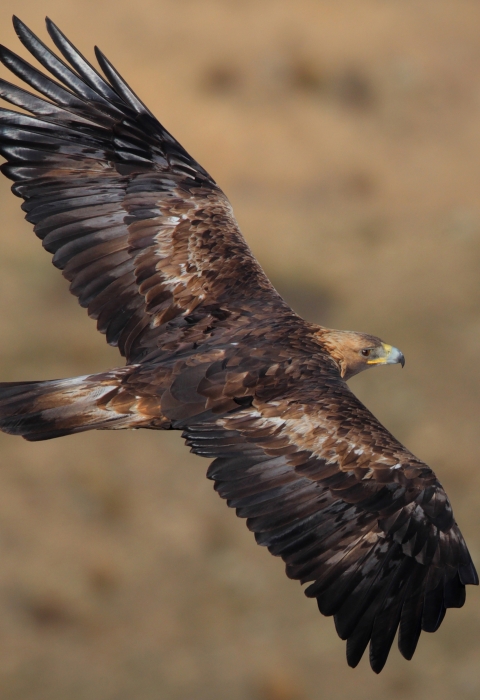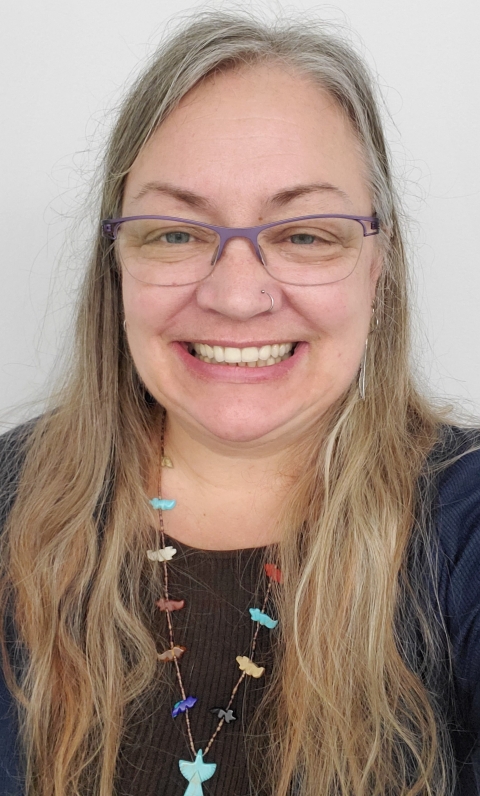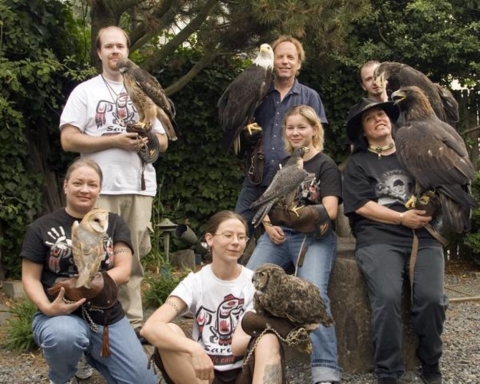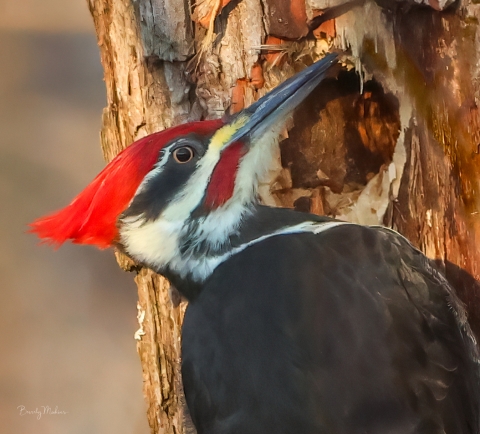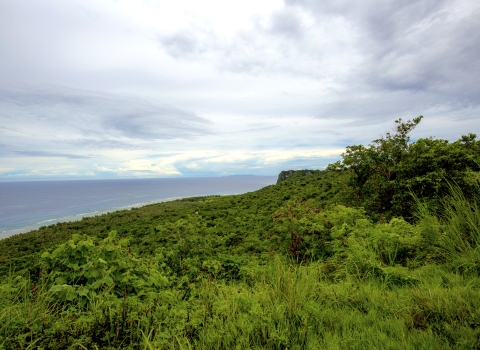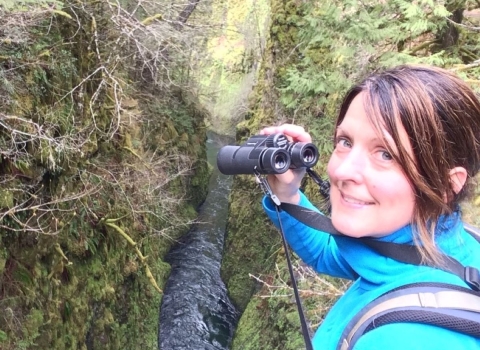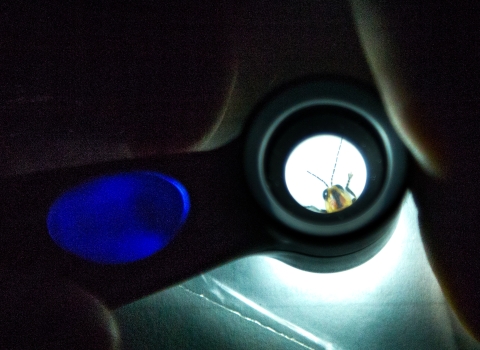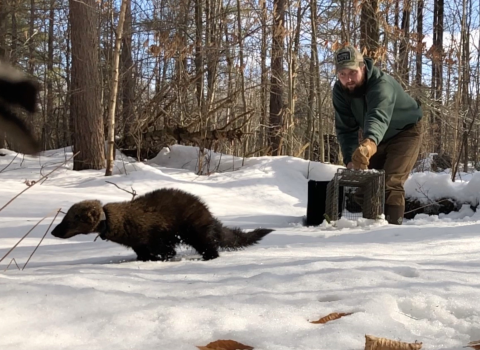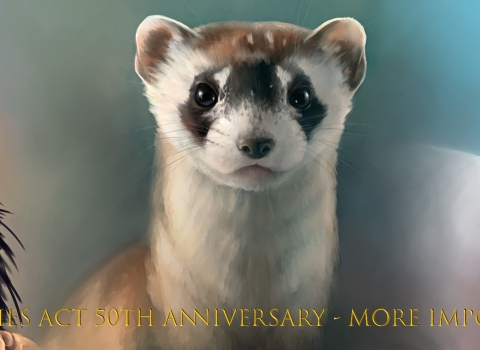Leslie Zacher has spent most of their life helping birds in captivity. After starting their career working in a rehabilitation and education wildlife center, Zacher is now a wildlife biologist with the U.S. Fish and Wildlife Service’s Migratory Birds program. They support organizations, agencies, Tribes and members of the public to protect and rehabilitate what they fondly call “feathered dinosaurs” – a fun way of describing how modern birds share many of the characteristics of their Mesozoic-era ancestors.
Below, Zacher shares how they got their start, and why woodpeckers deserve “mad respect.”
Tell us about yourself. How did you become interested in conservation or the work that you do?
I’m a Pacific Northwest native, born in Seattle and raised in Oregon and Washington. I have been involved with animals and outdoors all my life, but there was a two-year stint where we lived in Germany, which is where my love of outdoors really got started. Even though I’ve been camping since I was eight months old, the first camping trip I remember is when we camped in the Black Forest (Baden-Württemberg in southwest Germany). The amazing forest, deep bright green mosses, clear creeks and the diversity of woodpeckers and songbirds was amazing. I was probably sleeping when the owls started hooting.
I started volunteering at Sarvey Wildlife Care Center taking care of wildlife – including birds used for educational outreach – in 1998. The work was messy, noisy, and sweaty but so rewarding. I continued volunteering during my college career and was eventually hired as staff. When I came to the Service, I had been with the facility 14.5 years and was the Rehabilitation Clinic Director for the last four.
What did you study and how did you get involved in public service?
The wildlife center is a nonprofit organization as most are, but I’d always wanted to work in the Service to conserve our wildlife and habitat resources. I started my educational career a bit later than most, about 10 years older than my classmates, at the University of Washington College of Environment and Forest Sciences. Originally, my major was Conservation of Wildlands with a minor in Wildlife Sciences, but the college shelved that degree, so I switched it to Environmental Science and Terrestrial Resource Management and retained my minor.
Even though I always wanted to work for the Service, finding my way here was some form of fate. I had reached the pinnacle of the career path at the wildlife center and the Pacific Region Migratory Bird Permit Office needed someone with the experience and background I had. I was very fortunate to leave the wildlife center in April and arrive with the Service in May of 2012.
What do you do at the Service?
I am one of two subject matter experts in the Service for captive management and husbandry (care, cultivation, and breeding) of migratory birds. I previously held a state rehabilitation permit and oversaw our federal permits that allowed for care of migratory birds. I’m an initial contact for members of the public and provide technical assistance for applicants and current permit holders. I view this step as the gateway to allowing others to do good works in conservation and education. I am lucky to work with our permit holders (and the birds they work with), members of the public, Tribes, sister and partner agencies, law enforcement and so many more. I also review regulations and develop policies and procedures, as well as review of other permit types for captive care of birds during their activities. I like to think of it as helping people be the best they can be to do the best possible for migratory birds.
What's your favorite thing about working for the Service?
Helping people and birds. Hands down, that is the bottom line. I believe that what I do, the assistance and guidance I provide, makes a difference in both human and migratory bird lives.
Do you have a favorite bird?
Feathered dinosaurs are awesome! How do you choose? I specialized in hummingbirds and Vaux’s swifts in rehabilitation. It is truly a toss-up between the two! Next would be the pileated woodpecker. Anything that can use their head and beak as a jackhammer and hear insects inside the tree deserve mad respect.
What advice do you have for someone interested in a career in conservation or public service?
Volunteer early and often with the Service or other agency to really learn what it is you’d like to do. Tailor your education to meet job requirements, but don’t be afraid to add something interesting and unrelated to your degree even if it means another quarter to finish it up. You just never know what will apply to a position you are interested in. Lastly, if you haven’t already, get a USAjobs.gov account set up so you can browse federal positions and see what the positions do, where they are located and what the requirements are.
